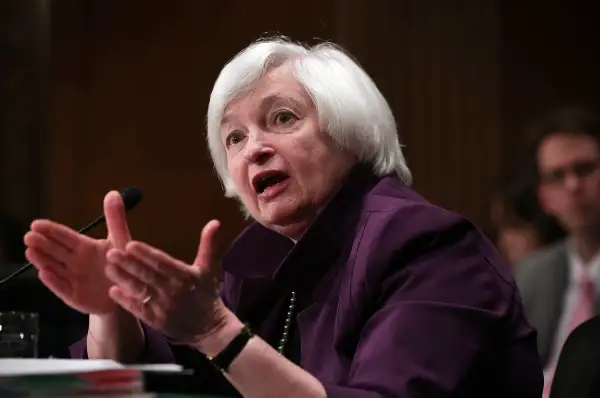The Fed Left Interest Rates Alone. Here's What it Means for You.
Money is not a client of any investment adviser featured on this page. The information provided on this page is for educational purposes only and is not intended as investment advice. Money does not offer advisory services.

After months of speculation, anticipation, and consternation, the Federal Reserve has decided to punt on raising rates until later in the year or 2016.
Given recent concerns about the slowing global economy led by China, low inflation, negligible wages gains for workers — and real worries about risks in the stock market — the Fed decided to keep short-term rates at basically zero. That's where the federal funds rate, which is what banks charge one another on overnight loans, have stood for nine years since the depths of the financial crisis.
While the U.S. economic activity is expanding moderately, "the Committee continues to see the risks to the outlook for economic activity and the labor market as nearly balanced but is monitoring developments abroad," the Fed said in announcing its decision.
Investors generally cheered the news, with the Dow up 170 points in late afternoon trading, as investors believe the Fed's decision avoids a possible headwind to growth.
Still, this leaves Wall Street in pretty much the same position going forward — uncertain when the Fed will finally begin to hike rates.
The central bank has been leaving hints and clues that a rate increase, or so-called "normalization," would happen sometime this year. In March the FOMC decided it would stop being "patient," while Fed Chair Janet Yellen said in July that only "some" improvement in the labor market would precipitate a move and said that an increase would be "appropriate" this year.
"The Fed has been slowly setting the stage for a liftoff," says Wells Fargo Securities senior economist Sam Bullard.
Now that the Fed has made it's decision, what does this mean for you?
Well, investors can be forgiven for getting wrapped up in the inner-workings of monetary policy, since the press and politicians have talked almost nonstop about the goings-on at the Fed since the Great Recession.
Terms like "quantitative easing," "zero lower bound," and "currency debasement" have pockmarked the zeitgeist in recent years.
By keeping short-term rates at zero, the Fed is demonstrating that global events and lingering difficulties at home are limiting economic potential.
Still it's important for investors to maintain a long perspective.
"We continue to believe that markets will be driven by worldwide fundamentals, rather than the unveiling of a well-telegraphed event," says S&P Capital IQ's Sam Stovall.
How are the fundamentals faring? Let's take a look.
Good News
The U.S. economy grew by 3.7% in the spring, the Commerce Department recently announced, while the unemployment rate dropped to an impressively low 5.1%. (The Fed had signaled that it would consider the economy near full capacity at an unemployment rate of 5.5%.)
There are positive signs once you peer a bit closer into the data. The percentage of people who have been unemployed for 27 weeks or longer has dropped considerably over the past couple of years, and so to has the share of workers who are working part-time but would rather be full-time. Moreover the percentage of Americans who are quitting their job - which demonstrates a confidence that a better one is available - has continued to trend upwards since the end of the recession.
Bad News
Have you looked at your 401(k) statement recently?
The stock market endured a 12% decline recently thanks to fears over China's slowing economic growth. Even with the recent decline, equities still aren't particularly cheap.
Inflation has proven stubbornly low, thanks in large part to cheap oil. Even if you strip out the volatile energy and food components, inflation stands comfortably below the Fed's 2% target. And the Fed predicts it will be some time before we get there. More importantly for your bank account, wage growth has remained stilted throughout the recovery.
No matter today's Fed decision, workers and investors alike won't start to feel the wind beneath their sails — and more confident about their personal finances — until meaningful wage growth emerges.
Despite its vast powers, the Fed can't simply make that happen.
